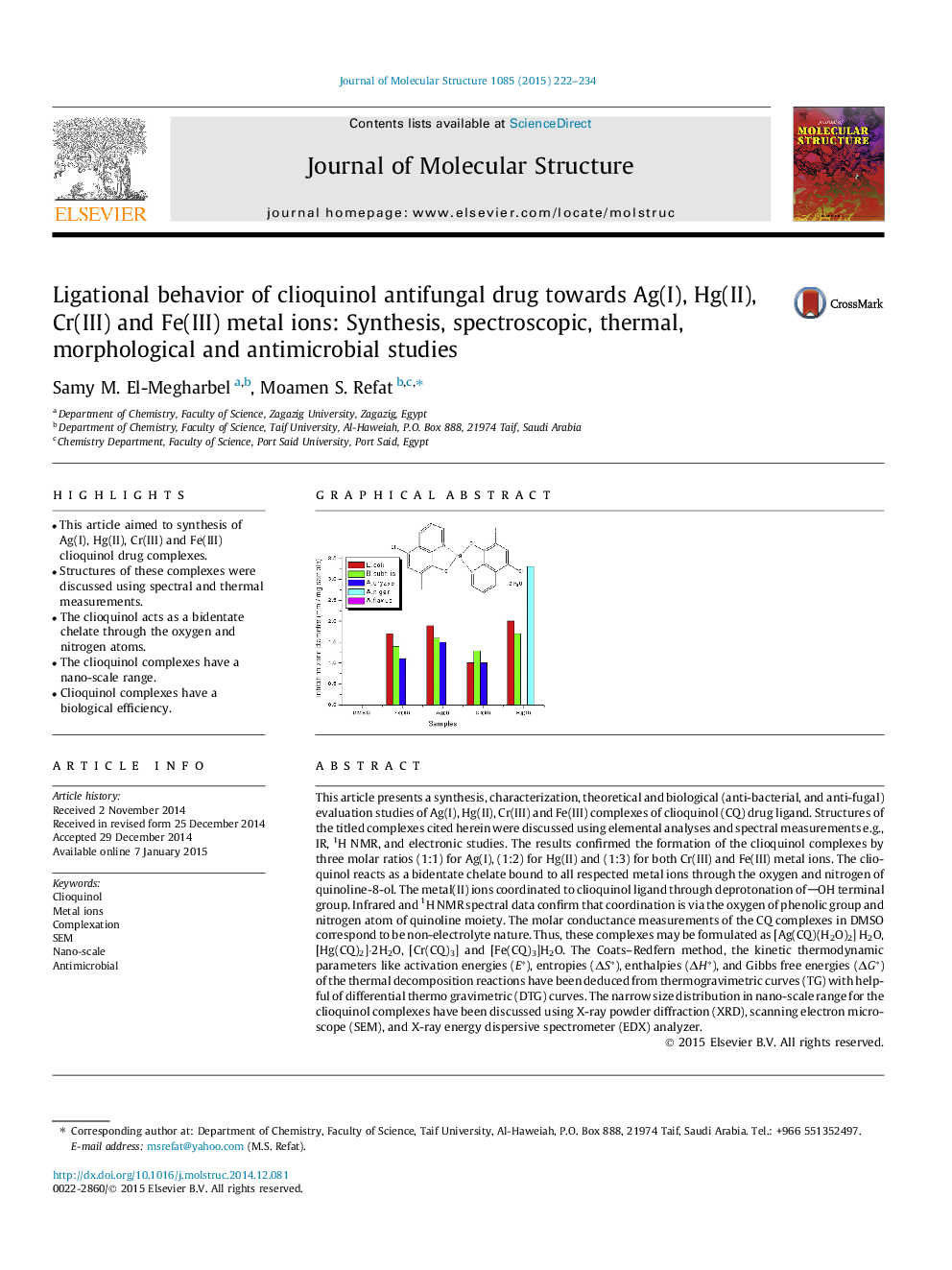| کد مقاله | کد نشریه | سال انتشار | مقاله انگلیسی | نسخه تمام متن |
|---|---|---|---|---|
| 1402035 | 1501732 | 2015 | 13 صفحه PDF | دانلود رایگان |

• This article aimed to synthesis of Ag(I), Hg(II), Cr(III) and Fe(III) clioquinol drug complexes.
• Structures of these complexes were discussed using spectral and thermal measurements.
• The clioquinol acts as a bidentate chelate through the oxygen and nitrogen atoms.
• The clioquinol complexes have a nano-scale range.
• Clioquinol complexes have a biological efficiency.
This article presents a synthesis, characterization, theoretical and biological (anti-bacterial, and anti-fugal) evaluation studies of Ag(I), Hg(II), Cr(III) and Fe(III) complexes of clioquinol (CQ) drug ligand. Structures of the titled complexes cited herein were discussed using elemental analyses and spectral measurements e.g., IR, 1H NMR, and electronic studies. The results confirmed the formation of the clioquinol complexes by three molar ratios (1:1) for Ag(I), (1:2) for Hg(II) and (1:3) for both Cr(III) and Fe(III) metal ions. The clioquinol reacts as a bidentate chelate bound to all respected metal ions through the oxygen and nitrogen of quinoline-8-ol. The metal(II) ions coordinated to clioquinol ligand through deprotonation of OH terminal group. Infrared and 1H NMR spectral data confirm that coordination is via the oxygen of phenolic group and nitrogen atom of quinoline moiety. The molar conductance measurements of the CQ complexes in DMSO correspond to be non-electrolyte nature. Thus, these complexes may be formulated as [Ag(CQ)(H2O)2] H2O, [Hg(CQ)2]⋅2H2O, [Cr(CQ)3] and [Fe(CQ)3]H2O. The Coats–Redfern method, the kinetic thermodynamic parameters like activation energies (E∗), entropies (ΔS∗), enthalpies (ΔH∗), and Gibbs free energies (ΔG∗) of the thermal decomposition reactions have been deduced from thermogravimetric curves (TG) with helpful of differential thermo gravimetric (DTG) curves. The narrow size distribution in nano-scale range for the clioquinol complexes have been discussed using X-ray powder diffraction (XRD), scanning electron microscope (SEM), and X-ray energy dispersive spectrometer (EDX) analyzer.
Figure optionsDownload as PowerPoint slide
Journal: Journal of Molecular Structure - Volume 1085, 5 April 2015, Pages 222–234